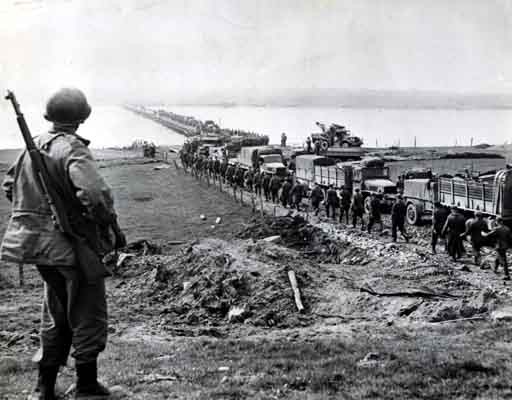
The Rhine Crossings in World War II
The spectacular capture of the Ludendorff Bridge spanning the Rhine at Remagen in early March 1945 was pivotal in the conquest of Germany. However, the Allies had planned other Rhine crossings weeks earlier and carried them out as part of their strategy to encircle and capture the Ruhr, the industrial center of western Germany.
Turning Point
The US Third Army carried out four river assaults in late March. The 5th Infantry Division undertook the first on March 22, 1945, crossing the Rhine at Oppenheim, south of Mainz. They crossed without the usual artillery preparation, a maneuver that caught German troops by surprise. Within 48 hours, four US divisions had crossed the Rhine at Oppenheim and positioned themselves to advance into Germany. Third Army troops soon also successfully assaulted the Rhine at three other locations: Boppard, St. Goar, and south of the city of Mainz. Two divisions of the US Seventh Army crossed the Rhine near the city of Worms on March 26, 1945. All of these operations were vital in facilitating the encirclement of the Ruhr and the conquest of Germany.

The planned Rhine crossing near Wesel, on the northern part of the Rhine, was the largest amphibious and airborne operation mounted since D-Day. Late on March 23, two British and two US divisions (from the US Ninth Army) began to cross the river near Wesel. Two airborne divisions, one British and one American, landed on the east bank of the Rhine on the following day to buttress the river assault.

By the end of March, all four US armies fighting in western Europe were east of the Rhine. While the First and Ninth Armies followed through to encircle the Ruhr, the Third and Seventh Armies moved east into central and southern Germany. Both operations would end with the surrender of Germany on May 7, 1945.
Critical Thinking Questions
- How did this campaign affect the course of the war?
- What was the relationship between the progress of the war and the mass murder of Europe’s Jews?

